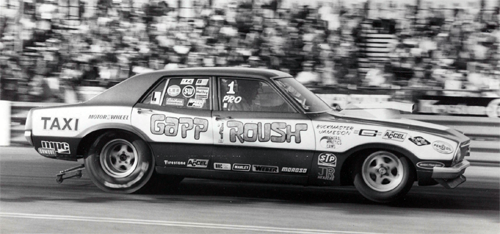Nice clean shot of the front end of the Maverick showing the engine and the ‘famous’ exhaust plates.
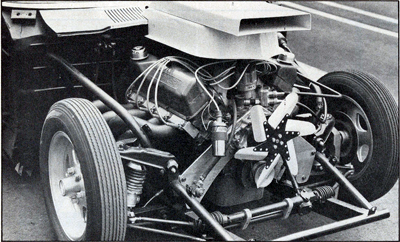
Nice clean shot of the front end of the Maverick showing the engine and the ‘famous’ exhaust plates.

From the Files: Taurus Taxi II.
I think the original author is C. Minger?

Saw this article, which is pretty cool.
The industry I have worked in over the last 20 years has made me want to see correct information at all times. I think I got it right here…
– Jeff
———
Dear Editor,
I recently read the article posted on your site titled “THE TIJUANA TAXI: UNDER CONSTRUCTION”.
First of all, thank you for posting the information. It is good to see Roush McClenaghan and Roush interested in creating a replica of the ‘Taxi’.
I would like to make a few comments regarding the article.
1. Sourcing of the article
The author, David Exum, clearly referenced another article on your site by Brian Wood called “Hailing the Cab”. This should be acknowedged and linked to as it is a article that provides a great deal of background and is one of the few in-depth articles with Wayne Gapp that can be found.
Here’s the Brian Wood article.
2. Regarding loopholes
The NHRA Drag Rules for 1974 and 1975 clearly and definitively allowed use of vehicles over 105 inches of wheelbase and allowed for significantly different weight factors for those vehicles that equaled or exceeded that wheelbase.
The ‘Taxi’ was an effort to achieve maximum performance within the established rules…that is not a loophole…that’s just using the rules to maximize effect.
3. Years that the ‘Taxi’ was used in competition
The ‘Taxi’, as stated in the article, did not debut at the 1975 NHRA Winternationals.
The first NHRA national event appearance of the ‘Taxi’ was at the 1974 Summernationals at Englishtown where a runner-up finish was scored against Larry Lombardo.
The Taxi’s last run at a NHRA national event run for Gapp & Roush was on 12-October 1975 at Pomona where the car bowed out in the 2nd round of competition.
The article states that the NHRA changed the rules for the ’75 season and these rule changes prompted the creation of the ‘Taxi’. This is not a correct statement.
The rules that brought the ‘Taxi’ into existence were established by NHRA’s 1974 ‘NHRA Drag Rules’ and the 1975 ‘NHRA Drag Rules’ extended those rules but changed the weight factors in place.
You can see the applicable NHRA Drag Rules here:
1973 – NHRA Drag Rules
1974 – NHRA Drag Rules
1975 – NHRA Drag Rules
The ’74 rules provided a huge advantage in weight for vehicles whose wheelbase extended beyond 105 inches. There were disadvantages (weight transfer over the length of the vehicle for traction, placement of rear tires on the track area and aerodynamics) but the advantages were big enough to move in the direction of building these vehicles. Hence the rush to build the ‘Taxi’.
What’s more impressive regarding the ‘Taxi’ is the performance of the vehicle during the 1975 season given the increase of the weight factor from 6.45/c.i. in 1974 to 7.10/c.i. in 1975.
I did a little write-up of the effect of the rules here.
Lastly, most commentators have stated that NHRA removed a rule regarding the year of production for vehicles participating in Pro Stock and that this rule is the reason that Ford competitors (primarily Glidden and Nicholson) went to 1970 Mustangs bodies.
However, the 1973, 1974 and 1975 Drag Rules state the following:
“BODY: Must be a 1969 or later model/year factory produced coupe, sedan or station wagon.”
NHRA may have intended to keep the rule at 5 years but from what I can tell they never _changed_ the rule to indicate that intention. Given that the 1970 Mustang is 108″ wheelbase vehicle and had two doors the reason for choosing that body style is due to the wheelbase rule and appearance rather than a change in the year of manufacture rule.
Briefly stated, NHRA raised the weight break from 6.45 to 7.10 for the class of vehicle that ‘Taxi’ qualified as. The differences in these factors means that the ‘Taxi’ ran with 237.9 additional pounds in 1975 as compared to 1974. Yet, 3 NHRA national event wins and 3 runner-up finishes were notched in 1975 with another win at the 1974 GrandNational Molson event and a runner-up finish at the Summernationals in 1974.
Link to August 2nd, 1974 National Dragster cover:
Good thing for the competition that NHRA raised the weight breaks otherwise the ‘Taxi’ would have been unbeatable in 1975 given the gains in performance.
3. Construction of the ‘Taxi’
Time indeed was a factor in the construction of the vehicle.
However, it was BECAUSE it would take only 60 days to build the ‘Taxi’ that the vehicle was constructed.
Gapp & Roush were able to acquire the 2-door Maverick chassis and make few changes to the chassis, add the 4-door body from the A-pillar back and get to the track.
Once again, thanks for the information about the ‘Taxi’!
– Jeff Gapp
The Gapp & Roush race car known as the ‘Taxi’ was built to take advantage of the NHRA rules in effect.
The story itself is a bit twisted both in actual history and in the re-telling over the years.
Let’s see if I can lay out a straight line…so to speak.
First…the rules
In 1973 NHRA Drag Rules the NHRA mandated weight per cubic inch facteos for Pro Stock vehicles were:
Additionally, the rules stated:
Seems pretty straightforward. A legal NHRA small block car would weigh, assuming a engine displacement of 366 cubic inches, 2379 lbs.
A big block car, say a Hemi, would have weighed around 2982 lbs.
An extra 603 pounds was a killer for the big blocks. It becomes obvious why the small block cars were so successful during the 1973 season (in fact continuing their success from 1972).
As my Dad stated in a interview:
Problem was, if NHRA had consulted their physics books they would have realized that it wasn’t all that straightforward. There was a thing called inertia, which no one took into consideration. Simply stated, if you take a 2,700-pound big-block car and a 2,300-pound small-block car and you let out the clutch on each one, it’s the inertia off the line that determines the performance during the first 60-feet of the pass, not the horsepower. In other words, if you kick a cement block and a block of wood, guess which one will travel the farthest? So, naturally, Jenkins’ little Vega just jumped off the starting line and consequently it killed the Chryslers during the 1972 season.”
Going into 1974, needless to say, there were a few complaints. So NHRA tried again.
The 1974 Drag Rules state the following:
Lastly the weight minimums:
Reading THOSE rules and representing Ford vehicles a few things pop out:
So a legal NHRA small block car over 105″ wheelbase would weigh, assuming a displacement of 366 cubic inches, 2360.7 lbs.
A Pinto would weigh 2433.9. So, that is 73 lbs. MORE than the Maverick with the same engine.
A big block car, say a Hemi, would have weighed around 2982 lbs.
The weight advantage of small block (at 105+ inches of wheelbase) vs. big block has gone UP to 621.3 lbs.
So..what happens? NHRA decides that the advantages provided for in the 1974 season need to adjusted. So they go insane adding complexity to the rules in the attempt to achieve parity. At this point, the rules are out of hand.
I have included the relevant set of rules below. See here for all the engine rules.
The new rules state:
The Ford vehicles just got jacked…and the Pinto’s got hammered.
Let’s run our weight calculations again:
In 1973 a small wheelbase Ford could run at: 2379 lbs.
In 1974 a Ford long wheelbase car could run at: 2360.7 lbs.
In 1974 a Ford small wheelbase car could run at: 2470.5 lbs.
In 1975 a Ford long wheelbase car could run at: 2598.6 lbs.
In 1975 a Ford small wheelbase car could run at: 2671.8 lbs.
In 1975 a long-wheelbase small-block Chevrolet could run at: 2525.4
In 1975 a Chrysler Hemi could run at: 3109.8
The difference between the 1974 weight and the 1975 weight was 237.9 lbs. In closing, the performance of the Taxi during 1975 is downright amazing given the attempts by NHRA to factor the vehicle.
Update: There are indeed a couple of different images floating around from this shoot. So no airbrushing!
This is an image that can be seen in several places.
I believe it’s in book called “Mustang Race Cars” and it’s the one that Roush Performance uses here as part of the “About” page for Roush Performance. Except it looks like in that one they airbrushed my Dad’s right arm out of the picture…or he moved and this is not the same shot.
This picture was probably taken in mid to late summer of 1974. The Mustang II was built for that season, so was the Maverick and the Pinto was from ’73.
Anyway, that’s a lot of Pro Stocker’s.
Dad still owns this building by the way.
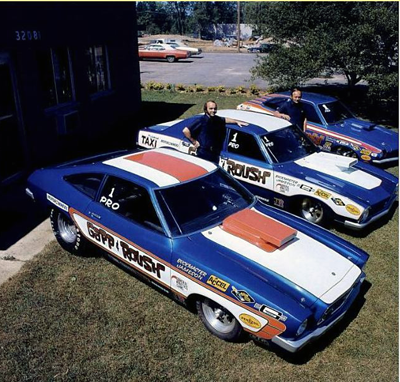
Below we have the cover of NHRA’s National Dragster from August of ’74.
The Taxi is still new.
The cover states:
Wayne Gapp’s still new 4-door Maverick, which annexed the Pro Stock runner-up honors at the NHRA Summernationals and hit consistent 8’s throughout the event, put it all together once again this weekend to dominate the Pro Stock portion of the Minnesota Dragway Division V WCS event. Said by many to have plenty left in the performance department, Gapp will undoubtedly be right in the thick of things at the Grandnational-Molson even, too.
Indeed it did…
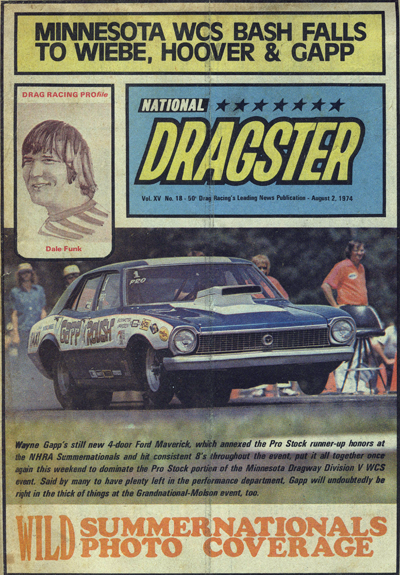
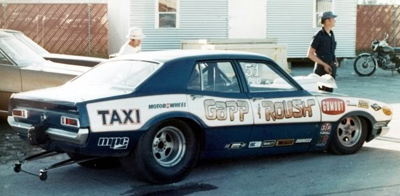
Here is a nice 3/4 angle shot of the ‘Taxi’ showing some good details of the vehicle.
One of the discussions that I have read about over the past is the actual name of the car.
There were three iterations of the name:
I don’t know the reasoning for the name changes. Some of have stated it was pressure from NHRA to change it from ‘Tijuana’ to ‘Juana’ or just plain ‘Taxi’.
I doubt it. The reasons for the changes are lost in time.
Check this article.
See #23.
Couple of things. The team lasted from late 1970 through 1978. The mention of the driving is nice but by looking at the other entries on this site a person could tell that there was quite a bit of engineering skill involved as well.
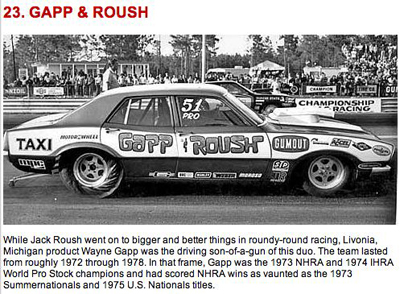
Pic of the Taxi at Indianapolis. Check out the ‘fro on the guy in the middle!
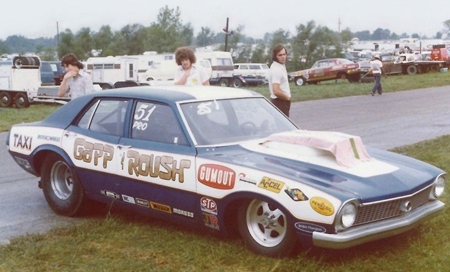
This is from an insert into the 1975 Press Kit, the cover of which can be seen here.
Gapp & Roush
Press Information
GAPP & ROUSH BIOGRAPHY
It is a well established fact that Ford has been the most dominant brand in Pro Stock competition during the past two years, and the biggest factor behind its power has been the winning record of past two years by Michigan-based team of Wayne Gapp and Jack Roush. As pair of former Ford engineers who had played a major role in the development of Ford’s SOHC 427 and II Boss” 429 racing powerplants, Gapp & Roush were able to accumulate a wealth of technical knowledge during the middle 1960’s became a solid foundation for their extremely successful efforts.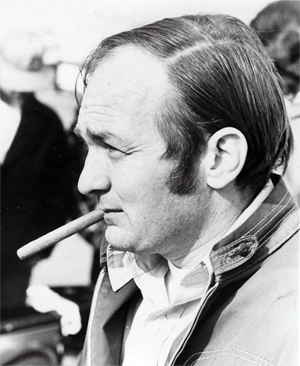
It was in fact one of Gapp & Roush’s personal technical developments that boosted Ford to its present position today, that being the creation of (the -ed) an exhaust port aluminum plate that reworked the port shape so as to provide tremendous breathing potential for the 351 Cleveland engine. That little bit engineering wizardry took place late in 1972, and since that time, Ford machines with those types of cylinder heads have made it to the final round in 13 out of 15 NHRA national events that were run in 1973-74, and Gapp & Roush entries running in 9 of them. Other Gapp St Roush feats assembled during that era include the NHRA World Championship in 1973 and the IHRA World Championship in 1974.
For Wayne Gapp and Jack Roush, their success story has been one of a steady and consistent rise in performance and winnings, sprinkled with a number of significant innovations along the way that have proved to be the deciding factors.
Before joining as business and racing partners, Gapp and Roush had earned names for themselves on an independent basis, each campaigning a series of strong running Ford-powered cars. Gapp’s initial efforts came with a 1965 A/FX Mercury Comet that set the B/Experimental Stock National Record of 10.27 seconds, and later he moved on to his “Super Cat” Cougar, first running the SOHC 427 and later switching to the “Boss 429”, an engine which he also help engineer for NASCAR applications. Roush in the meantime had done quite well with Super Stock Fairlanes and Mustangs, running with the famed “Fastbacks” team in the late 1960’s.
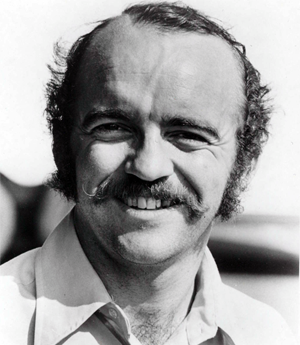 In 1971, the pair joined forces to campaign their first “Boss 429” powered Maverick, which was replaced by a hastily constructed “budget” Pinto in 1972 that was sold to Bob Glidden at the end of the year, and he drove the entry to runner-up honors in the that season’s Supernationals. It was the second Gapp & Roush Pinto that established them as stars in 1973, what with runner-up showings at the NHRA Gatornationals and U.S. Nationals, followed by wins at the World Finals and Supernationals.
In 1971, the pair joined forces to campaign their first “Boss 429” powered Maverick, which was replaced by a hastily constructed “budget” Pinto in 1972 that was sold to Bob Glidden at the end of the year, and he drove the entry to runner-up honors in the that season’s Supernationals. It was the second Gapp & Roush Pinto that established them as stars in 1973, what with runner-up showings at the NHRA Gatornationals and U.S. Nationals, followed by wins at the World Finals and Supernationals.
IN 1974, the craftiness of their combined thinking really became apparent as they came up with a 4-door Maverick, specifically built to take advantage of a loophole in the NHRA rules, allowing them to run the same engine at 125 lbs. less weight. The move established Gapp & Roush as master pre-race strategicians as they quickly won the Grandnational-Molson and scored runner-up finishes at the Summernationals and Supernationals/World Finals. By finishing the year with an IHRA World Championship, an NHRA Division V Pro Stock Championship, a second place finish in the NHRA World Championship standings, as well as a best-ever 80% won-lost record in match race competition, Gapp & Roush concluded what has to be regarded as their finest season to date.
This steady improvement over the years is perhaps the strongest asset to the Gapp & Roush operation, and it is the qualified opinion of many of drag racing’s trackside experts that their peak is more than a few campaigns away.
In any case, the Gapp & Roush story doesn’t end with performance. Acutely aware of the professional needs of racing, especially in its presentation to the general public, Gapp & Roush have become one of drag racing’s finest examples of what can be best termed as a “clean act”. All of their race cars have been among the sharpest appearing, with their traditional blue, red and white paint schemes designed by commissioned artists and carefully applied by custom painters. Gapp & Roush themselves always appear at the tracks in uniforms that are color-keyed to their race cars’ paint designs, and their articulate, easy going personal mannerisms have made them a popular hit with fans, track promoters and automotive media.
In conclusion, Gapp & Roush are leaders in all the important aspects of today’s professional racing needs, and the momentum gained by their tremendous seasons of the past few years can guarantee only better results in the future.
For further information, Contact:
WAYNE GAPP or JACK ROUSH
Gapp & Roush Performance
32081 Schoolcraft
Livonia, MI 48150
(313) 425-0640
